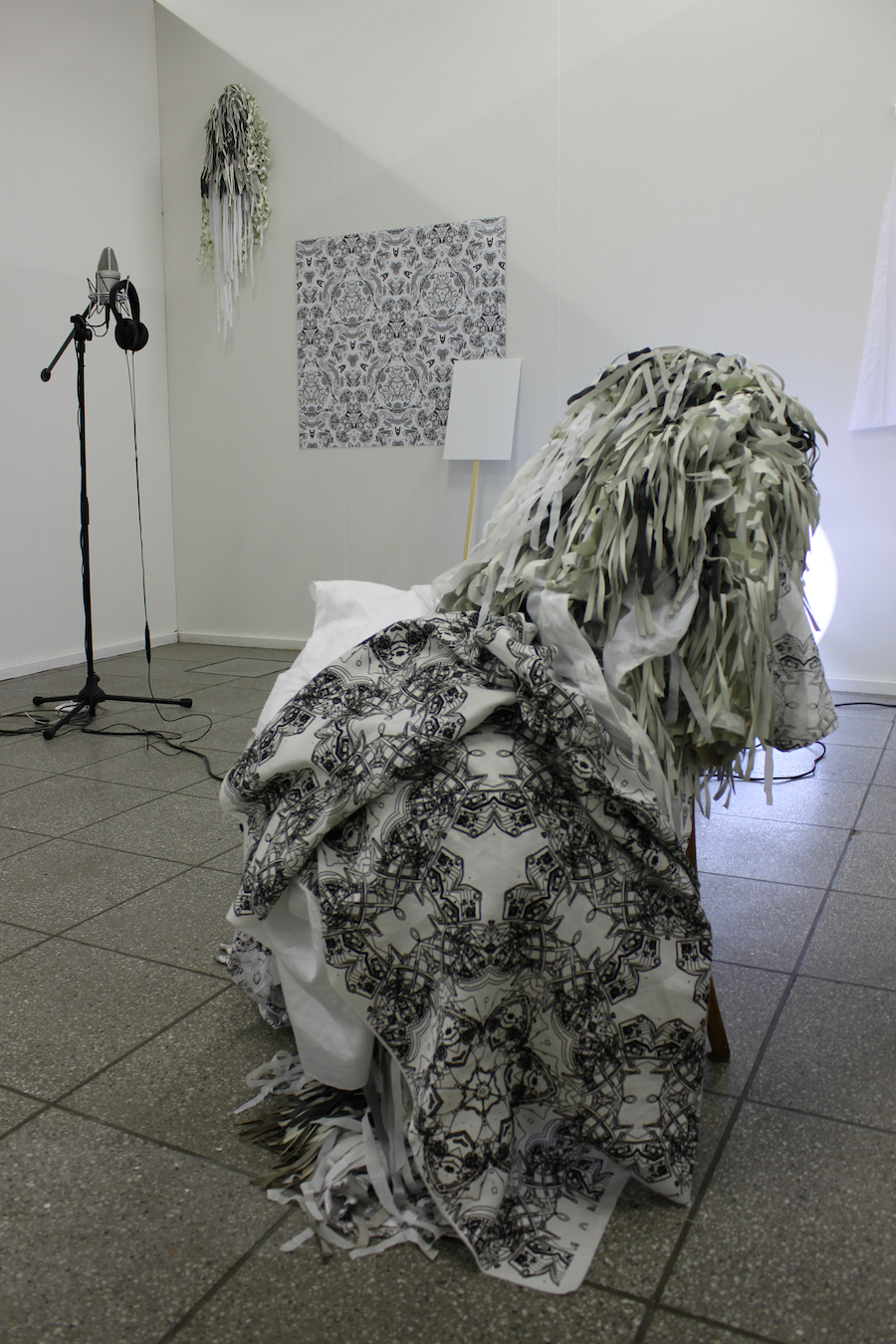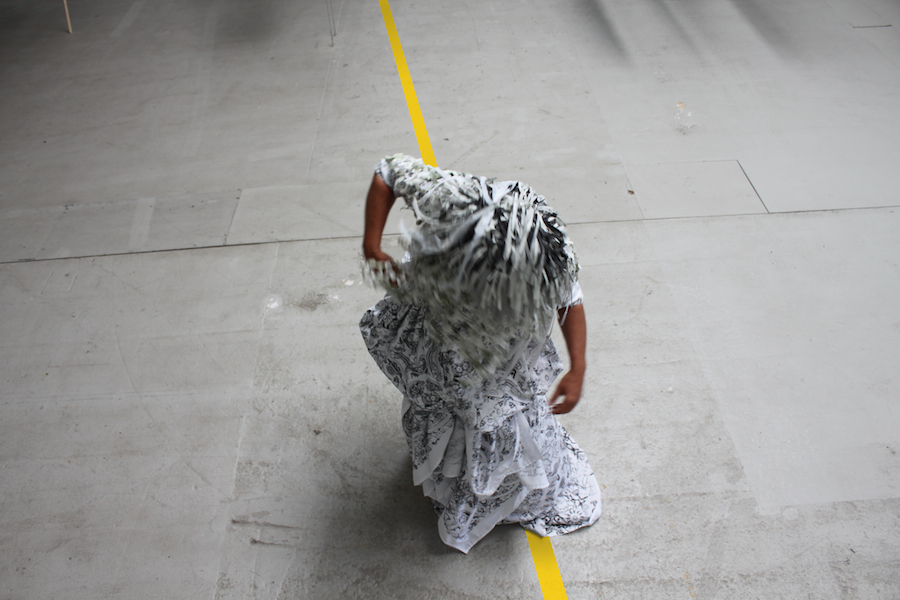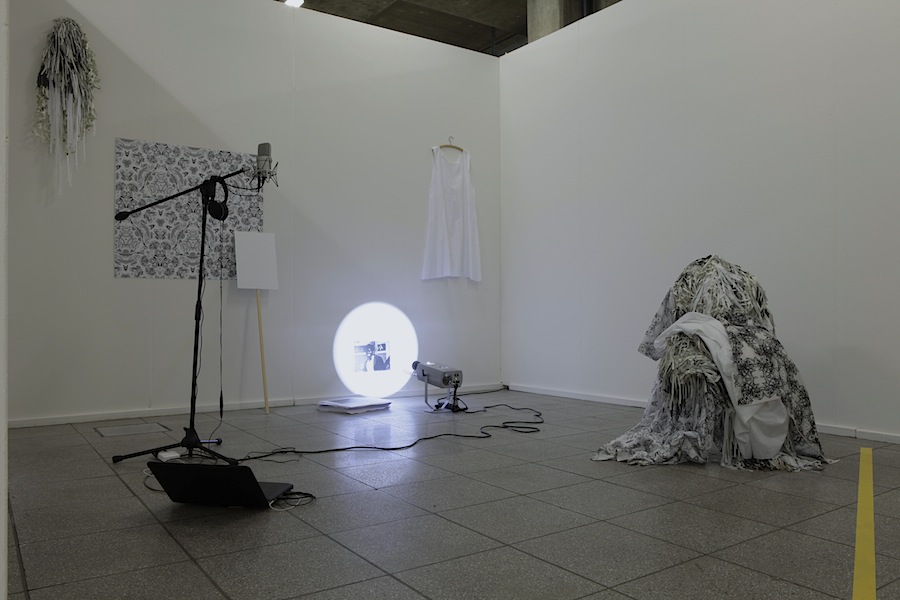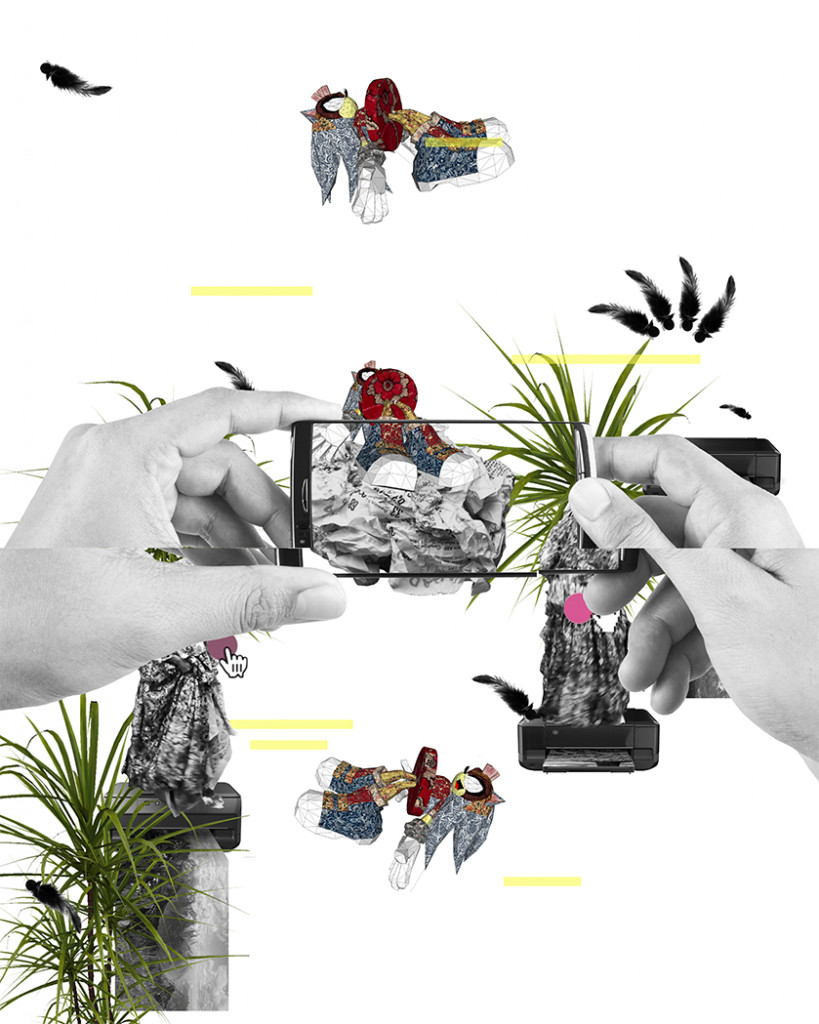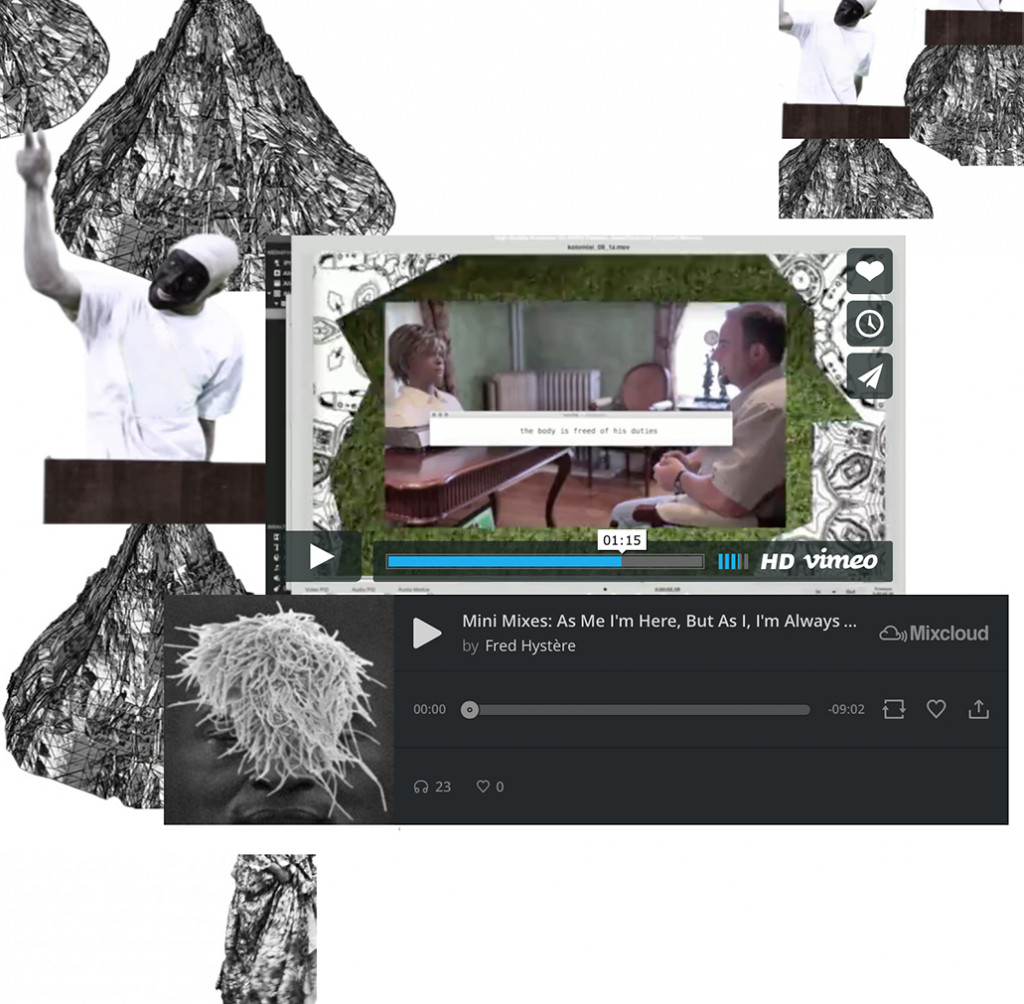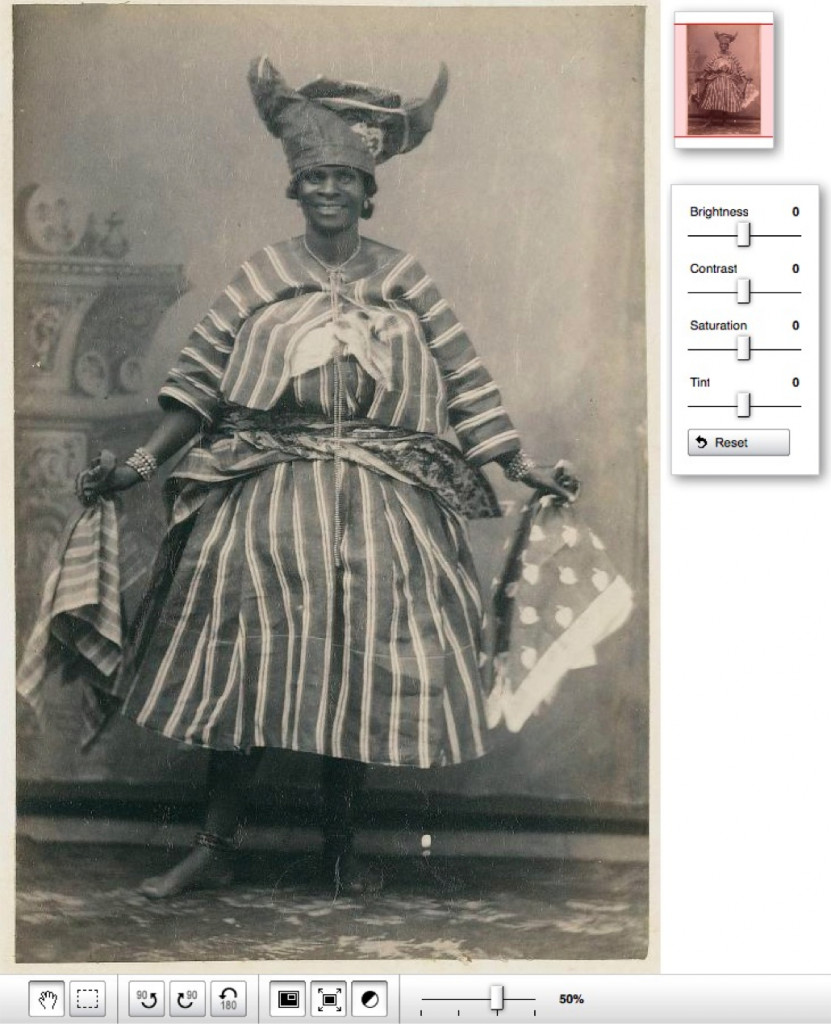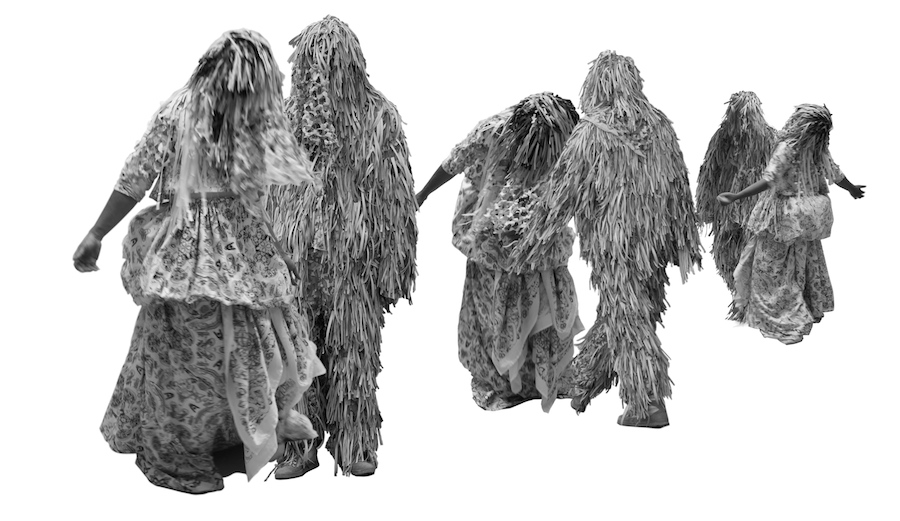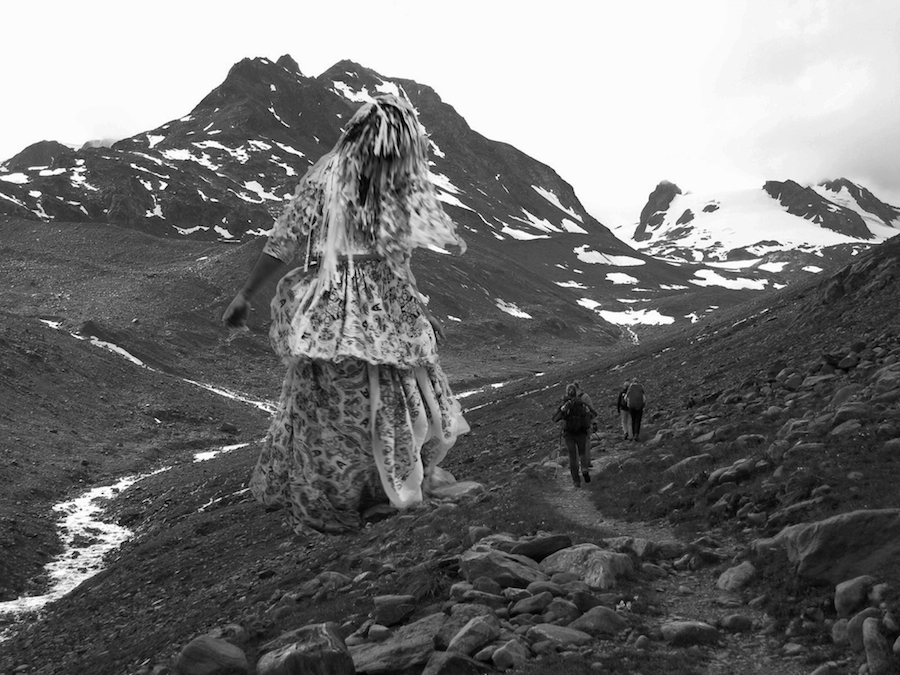link to kotomisi un:inform videochannel
kotomisi: un-inform is an ongoing project which negotiate the aesthetic violence and empowerment of a female cloth in the history and the presence of the Black Atlantic. kotomisi denotes a piece of clothing of (former) female slaves of the Dutch colony Surinam after the 17th century and was an important part of the triangular trade. The afro-european costume informed about the social status and communicated also emotions and comments of the wearer. A kotomisi transforms the women into an carnivalesque figuration which refers to subjugation and discrimination, as well as to self-empowerment and emancipation.
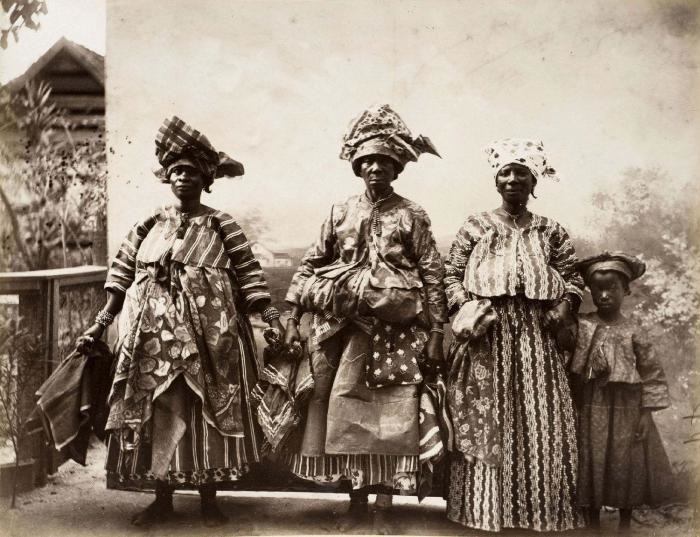
kotomisi is a diagram of ornaments and voices, clothes and foldings, performative inventions , audio pieces, and radio tracks.
Salon Suisse, “yes or no”, Venice Biennale 2015HFBK Hamburg, “Ästhetik des Virtuellen”, 2015
Station 21, Zürich, “Why I Changed My Name To Marvin Gaye. Von Zuschreibungen und Entschreibungen”, 2014
you want kot, kot, kot, kot, kot, me down a lonti kon dansi, koto, koto, koto, kotomisi i am that kotomisi that walks up and down a lonti kon dansi a prodo mi da de, prodo lek chamaeleon, when I want a green, when I want a blue, when I want a yellow, it`s, it`s coded and the coded, the coded language is just for you, me, I no, no, not you, you are excluded in this but that is alright, because I was exluded long, long, long time ago en nu ben ik terug, mijn naam is kotomisi
spoken word: Zulile Blinker, kotomisi
kotomisi denotes a traditional piece of clothing of female slaves (before and after liberation) of the former Dutch colony Suriname in the 17th century .
Througout 2 centuriers it had been developed further by its wearers. The multi-layered cothing is a complex knitted fabric, encompassed of latent codings.
The processed patterned fabrics of the costume passed translocal productions- and distribution processes between Europe,
Africa and America. The fabrics represented the commodities and even the means of payment in an already highly globalised slave trade.
They were often named after news events – thus they became news carriers. They even became media themselves: The way the parts of
the costume: skirt, jacket, headpiece, were worn, informed about the social status and property situation of the slave, and about the
occasion the costume was worn at. Furthermore the foldings of the headpiece expressed feelings of the slaves and enclosed and
communicated clandestine messages.
The ornaments of the fabrics, which were printed in India, Europe (i.a. Switzerland), referenced the African origin of the deported slaves
(mainly Ghana, Nigeria), as well as former European fashion styles. A person wearing a kotomisi transform into an overcoded figuration
which is tricky to decode and highly ambivalent. It refers to slavery and discrimination, as well as to self empowerment and emancipation
from supression and control.

aus den kolonialen Archiven/Tropenmuseum Amsterdam – clandestine Codes der angisa/Kopftücher:
Nach oben stehende Tuchenden vermittelten z.B. den Gemütszustand der Trägerin,
zum Beispiel Wut, Beschimpfung oder den Mut zum Widerstand gegen die Slavenhalter.
Auch Hinweise auf Forderungen nach dem Rederecht: „Let them Talk“ wurden durch Faltungen kommuniziert.
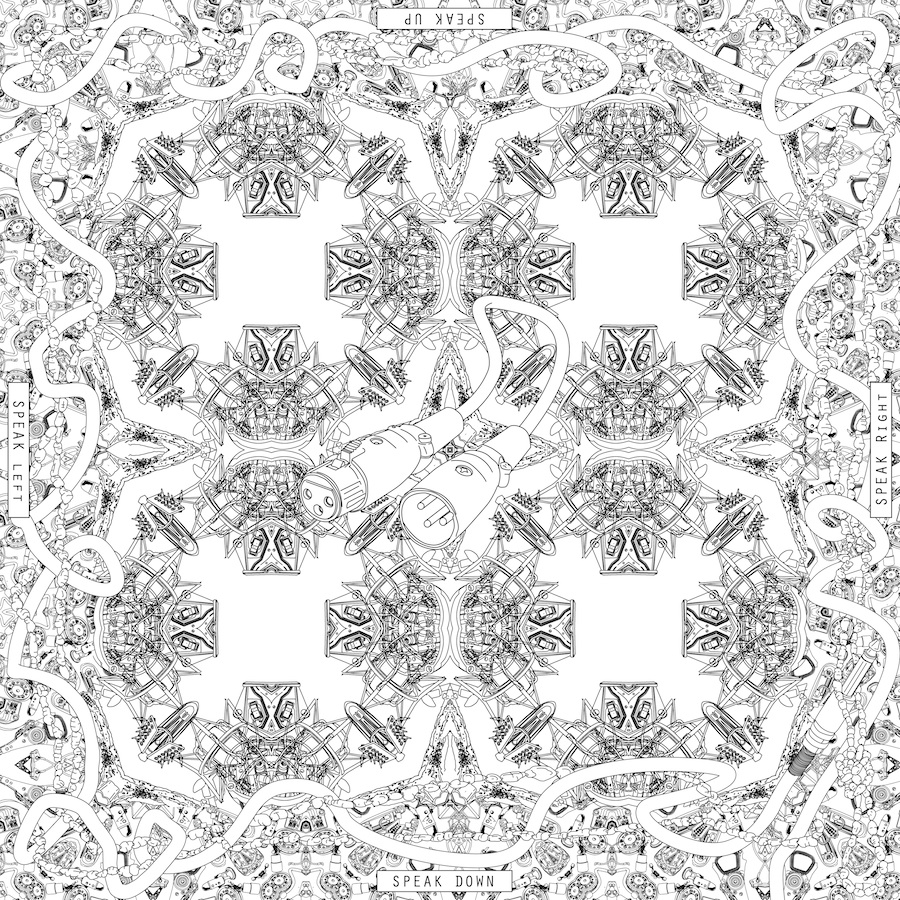
Ziffern n (2, 3, 4, 6) bezeichnen ein n-zähliges Rotationszentrum.
Ein ∗ steht für eine Spiegelachse.
Ziffern, die vor einem ∗ stehen, liegen abseits der Spiegelachsen
Ziffern, die nach einem ∗ stehen, liegen auf den Spiegelachsen
Ein × steht für eine Gleitspiegelung.
Ein ∘ steht für keine Symmetrien abgesehen von den Translationen
Die in jeder Gruppe vorkommenden Übersetzungen werden /*nicht/ explizit notiert.
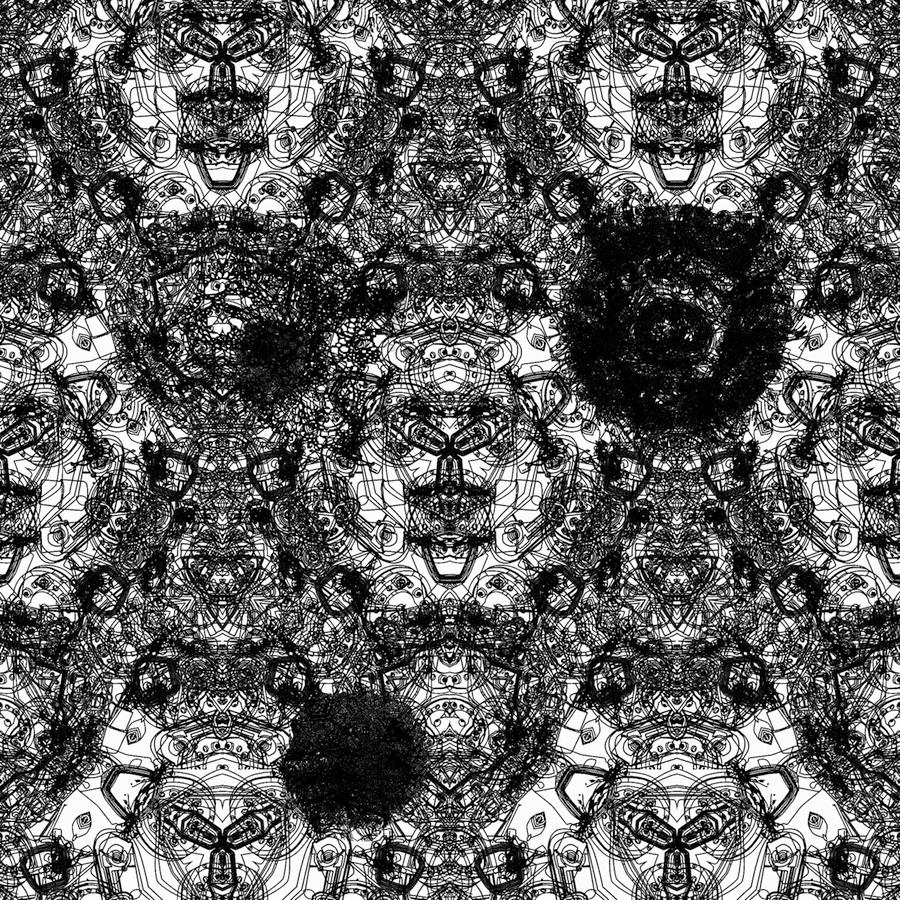
voice-generated ornaments
– as a follow-up of the reciprocal affair of critical Blackness and Whiteness, the signifyin’ voice of spoken word artist Zulile Blinker
is weaving the post/colonial history/ies via an open mic into ornaments, variations of camouflage/costumes
and potential parodistic dances.
kotomisi – non essential mix Vol 1
voices: Zulile, Radio Stanvaste/Helen Mijnals, Eiko, MacGhillie
remix: Aito, costume: Bilkiss, mask: Lapuneet, visual software: Simon Broggi
Shedhalle Zürich, “connect”, 14.7.-11.9.2011
Moscow Biennal, “DADA Moscow”, 22.9.-30.10.2011
Museo Maga, Gallarte (I), 25.9.- 29.10.2011
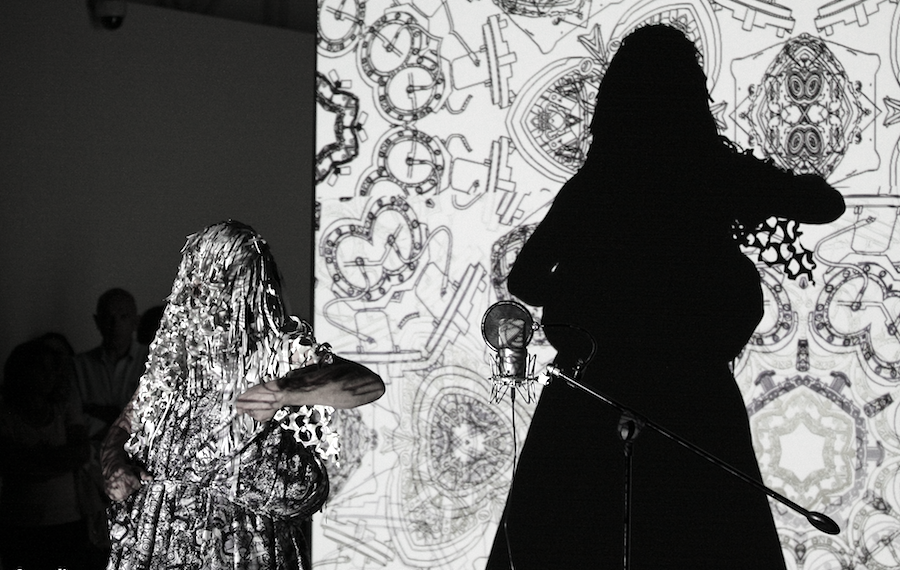

Performance at Moscow Biennal, “DADA Moscow”, 2011
Performance at Museo Maga, Gallarte (I), 2011


I am that kotomisi that comes and goes Rauw handel, dat ben ik doch, dat ben ik doch, kotomisi, camouflage for run away tracks, raw handel terug, stuitend, terug in mijn cultuur
nu, ik will het nu, je hebt mijn kleur losgemaakt, nu ben ik kleurrijk, mijn naam is kotomisi kot, kot, kot, kotkot, kot, faya stong to no bron mi so, no bron mi so –, please don‘t burn me, don‘t burn me, I down kot, kot, kotomisi koto, koto-misi, talking, hmmmm tan, tan tiri a non, Tan tiri a non don Tan tiri a non don kotomisi talking, from far lands faya stong to no bron mi so, no bron mi so the free, the free and I this, this, this mental abondance called slavery slavernij still you ask me where what and how comes encase you,
throw down my way of thinking, so what you ask me, hmmm? you really want to know? so wha-, so wha-, so wha-, so what? you re just asking to to see, to find the kotomisi dread lines? a lonti kon dansi I am still tracked, tracked, tracked at the bottom of communities backs I am bigger than men, bigger than men that woman that is camouflaged when we run away in the forest landscape you cant see I am Icheck mi no? Me na prodo sma? Me dat de weri African print (I am dressed in African clothes) Pret, Mi dat de foe Westcoast Africa, Ghana, you wanned me to be de, de, defeminized you want to defeminize me I am feminin now and I wear you proud with colour, colour, colour my idenity is back, back, back chip, chop

installation Art Basel: Swiss Art Award:
knowbotiq, dancing with’without Darwin
installation: microphon, ornament-generator, camouflage/costumes (kotomisi, MacGhillie) and a marker for a line-dance
in collaboration with Zulile Blinker, Joana Aderi, MacGhillie (voices) and Simon Broggi (ornament-software)
Art Basel, Swiss Art Award, 12.6.-17.6.2012
Rixc Riga, 4.10.-5.11.2012
The setting offers a mix of props: microphone, ornament‐generator, camouflage costumes, an empty demonstration‐shield , a spot light and a marker for a linedance. It is unclear if these props are part of a performance, which already happened in the past or will occur soon. The „foot notes“ on the floor, film stills of Jean Renoirs Charleston Parade (1929) hint the interest of the viewer into Music Halls of the 1920‐ties in Paris, Berlin, London. There, the artistic Avant‐garde were celebrating their self‐serving Negrophilia, performing epileptic and animal dances in the fog of Darwin’s evolution theory, and were remodelling Sous‐realistically Freud’s Unconsciousness.
voices/ornament
knowotiq is re‐reading this eurocentristic colonial fascination for the Unknown and Exotic together with spoken word artist Zulile, jazz singer Joana Aderi and MacGhillie. Their voices comment on Black colonial history, on the still permanent reciprocal affair of critical Blackness and Whiteness, and the refusal of being addressed and becoming part of such a „history“.
A software is capturing their voices, transforming them live into ornaments being displayed on a stage monitor. So, are these voices becoming stage decor? Or does such a decor which proposes rhythms, repetitions, tiled patterns raises as a potential for opaque, non‐graspable presence while dancing with`without Darwin?
clothes/camouflage
The clothes are re‐mixes of two different costumes: MacGhillie and „kotomisi“. MacGhillie is a camouflage suit, originally invented in the 19th century for hunting and that was later also used during the First World War. kotomisi denotes a traditional piece of clothing of female slaves (before and after liberation) of the former Dutch colony Suriname. The multi‐layered clothing is a complex knitted fabric, encompassed of latent coding’s. In its manifoldness kotomisi represents a vis a vis to the figuration of MacGhillie. Both figures, due to their erratic surface and intransparent historic and cultural connotation, withdraw in its moment of appearance from decipherment.
dancing with`without Darwin - resonating processes of postcolonial identification and classification, oscillating between the hyper presence of a mask, and visual redundancy.
